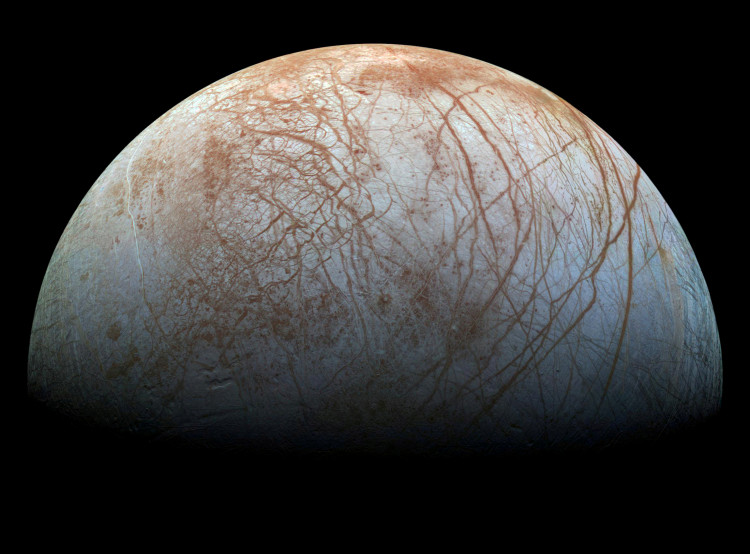A National Aeronautics and Space Administration spacecraft made the closest flyby of Jupiter's largest moon in 21 years this week.
Juno passed safely by Ganymede's ice moon at a distance of 645 miles (1,000 kilometers) at 12:56 p.m. EDT (16:56 GMT). But we won't get any images or other data for a time because NASA usually schedules uploads to Earth when the spacecraft isn't busy gathering data.
"It's our first close Ganymede flyby in 20 years! Stay tuned for images and science results," the NASA Solar System Twitter account said at the time of the flyby.
The spacecraft Galileo, which orbited Jupiter and flew by numerous of its moons between 1995 and 2003, made the last such pass of Ganymede in 2000.
Juno's next trick will be zipping past Jupiter's cloud tops for the 34th time in the extreme radiation environment, according to NASA. Juno is on a long-term mission to learn more about Jupiter's interior and weather, and it was cleared earlier this year for another mission extension, this time until 2025, based on its science return since arriving in the Jupiter system in 2016.
The recently completed Ganymede flyby could provide critical information for future research of Jupiter's icy moons, where two missions are slated to visit in the 2030s: the European Space Agency's JUICE mission and NASA's Europa Clipper mission.
Because of their watery environments and source of energy from the gravitational push of nearby planets, icy moons are thought to offer potential conditions for habitability.
The JUICE mission's main objective will be to explore Ganymede, as well as Callisto and Europa. Only three other spacecraft had seen Ganymede, the solar system's biggest moon, up close before Juno. In 1979, NASA's twin Voyager probes sailed by the moon, and in 2000, Galileo conducted the aforementioned near approach of Ganymede.
Ganymede is one of 79 known moons orbiting the gas giant Jupiter. Galileo Galilei discovered Ganymede in 1610, along with Jupiter's three next-largest moons.
.






